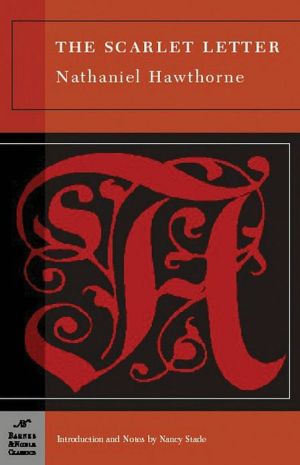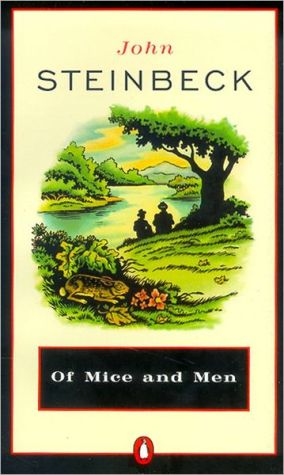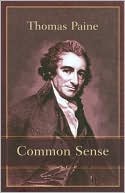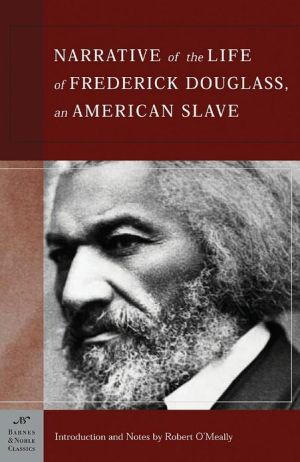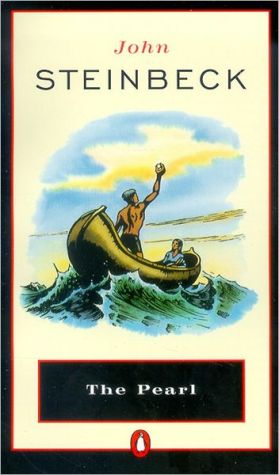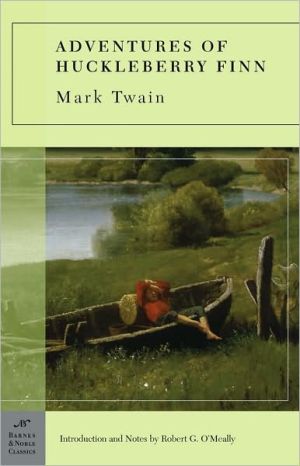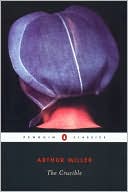The Scarlet Letter (Barnes & Noble Classics Series)
The Scarlet Letter, by Nathaniel Hawthorne, is part of the Barnes & Noble Classics series, which offers quality editions at affordable prices to the student and the general reader, including new scholarship, thoughtful design, and pages of carefully crafted extras. Here are some of the remarkable features of Barnes & Noble Classics: \ \ New introductions commissioned from today's top writers and scholars\ Biographies of the authors\ Chronologies of contemporary historical,...
Search in google:
The Scarlet Letter, by Nathaniel Hawthorne, is part of the Barnes & Noble Classics series, which offers quality editions at affordable prices to the student and the general reader, including new scholarship, thoughtful design, and pages of carefully crafted extras. Here are some of the remarkable features of Barnes & Noble Classics: New introductions commissioned from today's top writers and scholars Biographies of the authors Chronologies of contemporary historical, biographical, and cultural events Footnotes and endnotes Selective discussions of imitations, parodies, poems, books, plays, paintings, operas, statuary, and films inspired by the work Comments by other famous authors Study questions to challenge the reader's viewpoints and expectations Bibliographies for further reading Indices & Glossaries, when appropriateAll editions are beautifully designed and are printed to superior specifications; some include illustrations of historical interest. Barnes & Noble Classics pulls together a constellation of influences—biographical, historical, and literary—to enrich each reader's understanding of these enduring works. America’s first psychological novel, Nathaniel Hawthorne’s The Scarlet Letter is a dark tale of love, crime, and revenge set in colonial New England. It revolves around a single, forbidden act of passion that forever alters the lives of three members of a small Puritan community: Hester Prynne, an ardent and fierce woman who bears the punishment of her sin in humble silence; the Reverend Arthur Dimmesdale, a respected public figure who is inwardly tormented by long-hidden guilt; and the malevolent Roger Chillingworth, Hester’s husband—a man who seethes with an Ahab-like lust for vengeance. The landscape of this classic novel is uniquely American, but the themes it explores are universal—the nature of sin, guilt, and penitence, the clash between our private and public selves, and the spiritual and psychological cost of living outside society. Constructed with the elegance of a Greek tragedy, The Scarlet Letter brilliantly illuminates the truth that lies deep within the human heart.Nancy Stade is trained as a lawyer and has worked in the federal government and the private sector. She currently lives in Mexico, where she is working on a novel.
From Nancy Stade's Introduction to The Scarlet Letter \ Although the mark of Hester's crime is stitched in red across her breast, emblazoned in stigmata across the breast of her lover, and broadcast across the sky, Hawthorne never names her crime in The Scarlet Letter. The novel's title alludes to, but does not reveal, the letter A, which itself suggests, but does not divulge, the crime of adultery. By the time Roger Chillingworth, concealing his relationship to Hester when he wanders into the crowd during her exposure, inquires of a spectator "wherefore is she here set up to public shame," the two symbols of Hester's crime-The Scarlet Letter A and the baby Pearl-have all but revealed its nature. But The Scarlet Letter remains the fullest articulation of the crime, for Roger Chillingworth interrupts before the spectator has done more than insinuate the transgression that gives rise to the spectacle of public shame.\ If The Scarlet Letter evokes Hester's crime without naming it, the novel tells almost nothing about Hester and Dimmesdale's affair. During the reverie that briefly distracts her from the hideous spectacle of which she is the center, Hester recalls in sequence her childhood home, her father and mother, her own youthful likeness, and the early days of her marriage, but in her remembrance she skips over the time from her adulterous encounter with Dimmesdale to her present circumstance, as she stands at the pillory. Possibly Hester and Dimmesdale consorted with initially innocent intentions after one of his sermons, although it is difficult to imagine Hester, even before her fall, as so devoted to Bible studies that she would seek or elicit her minister's private tutelage. Nothing in the novel, apart from what the reader can glean from the natures of Hester and Dimmesdale, permits the inference that the couple had an enduring affair, although nothing contradicts this possibility, either. But by the time the novel opens, and even more so by its close seven years later, the characters are so transformed that the reader can hardly draw informed conclusions about their earlier selves. Despite the novel's frequent references to Dimmesdale's repressed passion, a sexual encounter between Hester and him seems as remote from the events described in the novel as the Puritan penal system is from contemporary mores. In Studies in Classic American Literature (see "For Further Reading"), D. H. Lawrence assumed that Hester seduced Dimmesdale, an explanation that renders the act of adultery more plausible, but not any easier to imagine. Depriving his readers of the means of imagining the event that triggers Dimmesdale's unraveling, Chillingworth's vendetta, Pearl's birth, and Hester's disgrace seems to be a deliberate part of Hawthorne's artistic design.\ The crime that gives the novel its name and preoccupies all of the characters, then, is shrouded as much by the symbolism that overshadows the thing symbolized as by the shame of the characters. Without an account of the criminal act, readers of The Scarlet Letter apprehend Hester's crime through the refracted light of multiple moral perspectives. In that he is Hester's creator, Hawthorne's view of Hester's crime is at least interesting, if not determinative of how readers of his day, or of ours, should respond. The narrator and the Puritan community both overtly pass judgment on Hester's act, although the former vacillates in the harshness with which he judges her. In addition, each of the three important adult characters-Arthur Dimmesdale, Roger Chillingworth, and Hester Prynne-present a particular response to Hester's adultery that may inform our own. The fourth important character, Pearl, though a child and only intuitively aware of the crime, offers an additional perspective as well as a real challenge to a response of unmediated censure, for if the Puritans cannot qualify their judgment of Hester's crime, they cannot acknowledge what Hester calls its "consecration." Though the perspectives of Hawthorne, the novel's narrator, the community, and each of the novel's four main characters say more about these individuals and their Puritan society than about adultery, each perspective contributes to the reader's multidimensional experience of the novel's central, unmentionable event.
